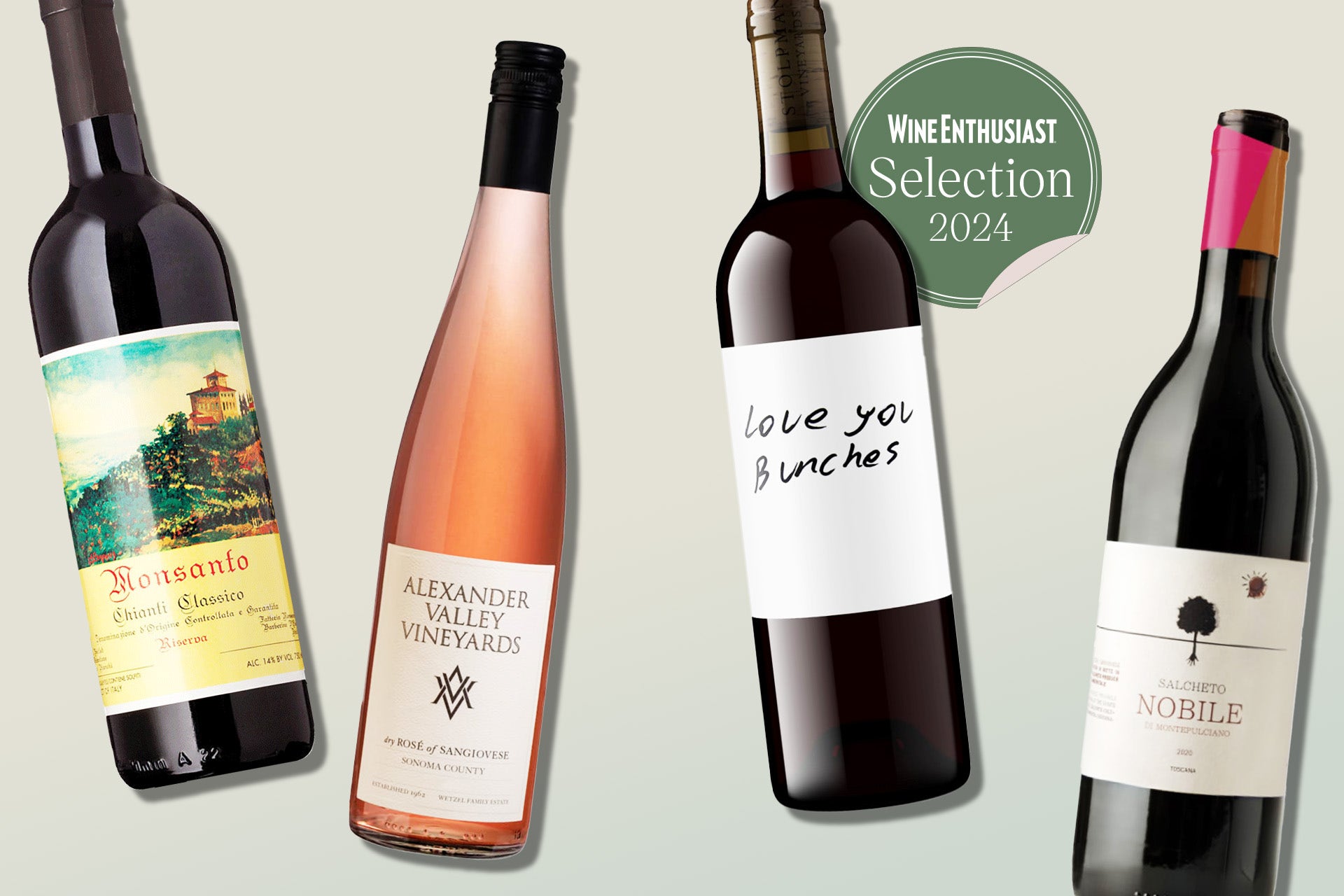Il Valentiano 2018 Campo di Marzo Sangiovese (Brunello di Montalcino)
All tastings reported in the Buying Guide are performed blind. Typically, products are tasted in peer-group flights of from 5-8 samples. Reviewers may know general information about a flight to provide context—vintage, variety or appellation—but never the producer or retail price of any given selection. When possible, products considered flawed or uncustomary are retasted.
*Products deemed unacceptable (receving a rating below 80 points) are not reviewed.
98-100
Classic
The Pinnacle of quality
94-97
Superb
A great achievement
90-93
Excellent
Highly recommended
87-89
Very Good
Often good value; well recommended
83-86
Good
Suitable for everyday consumption, often good value
80-82
Acceptable
Can be employed
Unsure About This Wine? Get Personalized Wine Matches Based On Your Taste.
Discover New Regions for Sangiovese
The Tuscan Wine Region is considered one of the most important in all of Italy. It’s here that Sangiovese flourishes, producing a variety of distinct and influential wines, according to our Tuscan Wine Guide. The Chianti area exports more wine than any other in Italy, and wines labeled with DOCG must contain at least 80% Sangiovese. Wines from the Chianti Classico, Ruffina and Colli Senesi DOCGs will typically spend more time in oak and in turn be more complex. Brunello, a clone of the Sangiovese grape, is only grown in the Montalcino area and requires a minimum five years of aging to be classified as Brunello di Montalcino. Rosso di Montalcino is also made from Sangiovese, but only requires a year of aging, resulting in more approachable wines. A handful of visionary winemakers that chose not to follow the DOCG…
Spanning across the central and southern areas of Washington State lies the Columbia Valley Wine Region. It is the state’s largest AVA, covering nearly one-third of the state’s landmass. The wines of the region have been described as having the potential to combine the structure and finesse of the Old world wines with the approachable fruit and ripeness of the New World style. Our Columbia Valley Wine Ratings illustrate the improvement in quality of these wines over the last decade or so. The main white grape varietals grown in the region are Chardonnay and Riesling which are discernible by their vibrant fruit and crisp acidity. The red varietals are predominantly Cabernet Sauvignon and Merlot, with a recent increase in Syrah particularly in the Columbia Valley sub region Walla Walla. It was the Merlot craze of the 1990s that sparked the…
Stretching 250 miles south from the San Francisco Bay to Santa Barbara County is the Central Coast Wine Region, a coastal sprawl responsible for about 15% of California’s total wine production. In the northern parts of the Central Coast, Chardonnay tends to dominate the plantings, with Pinot Noir, Merlot and Cabernet Sauvignon also playing significant roles. The cool, maritime-influenced climate along with the fertile and gravely soil contribute to Chardonnay’s crisp acidity and citrus flavors, and the extended growing season yields concentrated Merlot and Cabernet. Some of the top northern Central Coast AVAs include, Santa Lucia Highlands, Santa Cruz Mountains and Monterey. South of Monterey, the Paso Robles AVA has garnered fame for its wines produced from Rhône varieties, Cabernet and Zinfandel. At the southern end of the Central Coast, Santa Barbara County (made famous as the backdrop for the…









